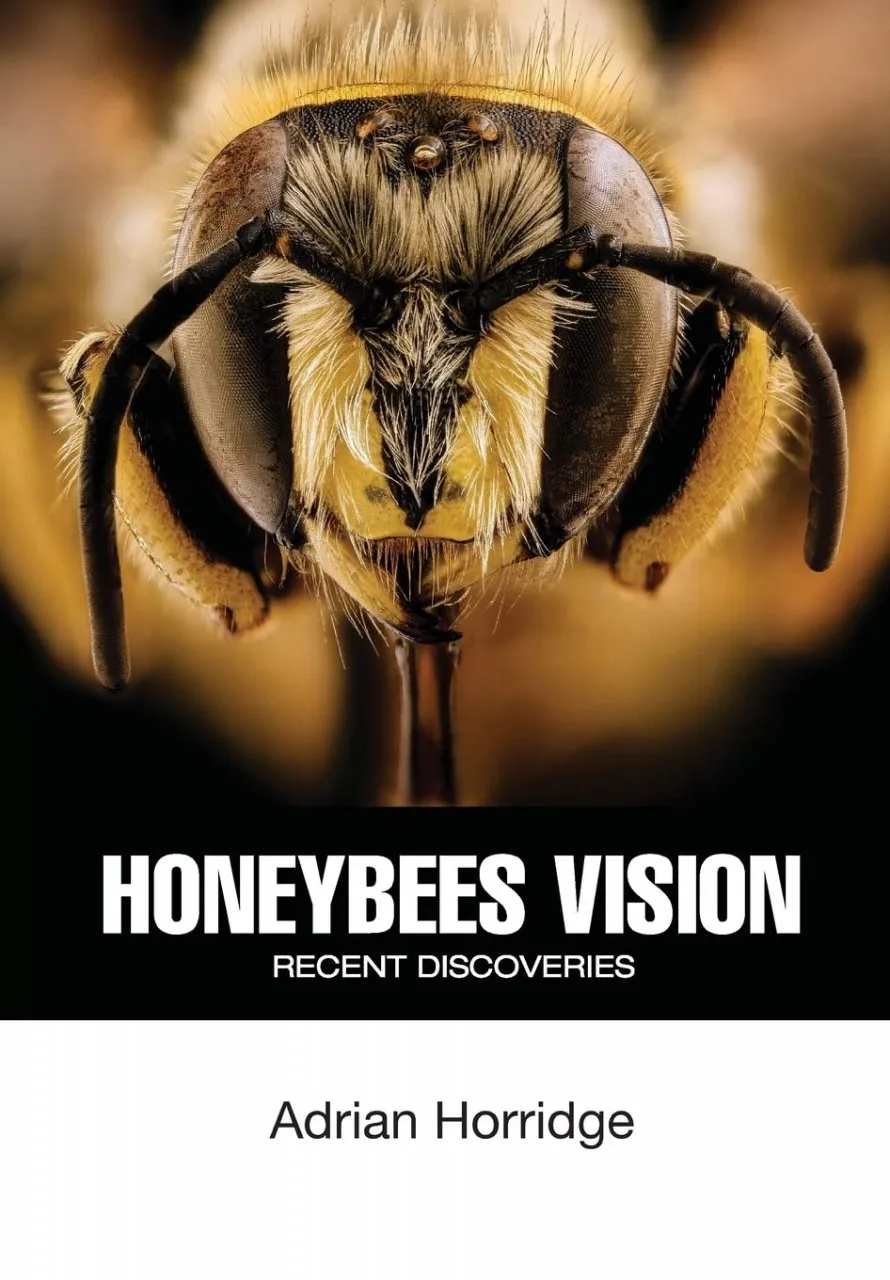Adrian Horridge
I am a retired professor still working on bee vision and general history of traditional canoes and sailing boats of the Pacific region. Updated 2020-01-30It's been another long, hot, summer but the rose garden has survived. There is a new gazebo that extends the sitting room into the garden. The nearest recent forest fires, 60 km away, caused a smoke problem for some days in January 2020. In December 2019, I had a new right hip joint, and now walk with a wheelie walker.
I was interviewed by Robyn Williams from ABC radio's The Science Show about honeybee vision. The interview aired on 18 January 2020, and is available to stream via New ideas on how bees see.
Now published: The Discovery of a Visual System - The Honeybee
In May 2019, I published my latest book The Discovery of a Visual System - The Honeybee.The hard-back version is expensive, but the online version is available.
My book on the Prahu is available online in Bahasa Indonesia. If you are a known specialist in that area; apply to me through my email address adrian.horridge@anu.edu.au.
In the pipeline
At present, I am working on a new book entitled"The Proper Use of Leisure",
and am looking for a publisher.
Everyone has different opinions on that topic.
The Annual Party this year will be in the first week of November, when the garden will be at its best. It is not a birthday party, but I hope to reach 93 this year.
Usually, there is a spare bed at my house, for travellers and friends’ short stay. Warning of arrival is required by my very fierce housekeeper.

The Discovery of a Visual System - The Honeybee
By Adrian Horridge, of The Australian National University, CanberraMay 2019 / Hardback / 256 Pages / 9781789240894 £85.00 / €110.00 / $116.67
Main Description
This book is the only account of what honeybees actually see. Bees detect some visual features such as edges and colours, but there is no sign that they reconstruct patterns or put together features to form objects. Bees detect motion but have no perception of what it is that moves, and certainly they do not recognize "things" by their shapes. Yet they clearly see well enough to fly and find food with a minute brain. Bee vision is therefore relevant to the construction of simple artificial visual systems, for example for mobile robots. The surprising conclusion is that bee vision is adapted to the recognition of places, not things. In this volume, Adrian Horridge also sets out the curious and contentious history of how bee vision came to be understood, with an account of a century of neglect of old experimental results, errors of interpretation, sharp disagreements, and failures of the scientific method. The design of the experiments and the methods of making inferences from observations are also critically examined, with the conclusion that scientists are often hesitant, imperfect and misleading, ignore the work of others, and fail to consider alternative explanations. The erratic path to understanding makes interesting reading for anyone with an interest in the workings of science but particularly those researching insect vision and invertebrate sensory systems.Read the full description and table of contents at CABI's bookshop.
Read a short summary of my findings on honeybee colour vision from my recent research as summarised in my book. I have noticed a handful of a errors and corrections to The Discovery of a Visual System which I've compiled in my corrections list.
- Publication list
- CV
- Blog post: What do bees ‘see’ and how does it inform our understanding of vision? (May 2019). In conjunction with the launch of my book The Discovery of a Visual System – The Honeybee, published by CABI in May 2019.
Recent papers on bee vision
Despite the upset of bee vision in my new book, the following publications are still mostly valid because the new work mainly changes our understanding of how bees detect colour and pattern, which they certainly do not see as we do.Bees detect total amount of blue, vertical position of blue, polarity of blue colour relative to a landmark of green modulation at edges, width between two vertical edges of green contrast, amount and some distributions of green contrast at edges (such as average orientation, radial spokes, circles, and regional differences, especially asymmetry), At present, the only full account is in my new book.
- Bee Vision is Totally Different (2017). The Australasian Beekeeper 2017 Vol 118, No. 12, 544-546.
- Why Newly Mated Queens Get Lost (2017). American Bee Journal Vol 157, No. 9, September 2017. 985-987.
- Parallel inputs to memory in bee colour vision (2016). Acta Biologica Hungarica 67, 1-26.
- How bees distinguish patterns by green and blue modulation (2015). Eye and Brain 7, 83-107.
- How bees distinguish colors (2015). Eye and Brain 7, 17-34.
- How bees discriminate a pattern of two colors from its mirror image (2015). PloS ONE 10, 1-23.
- Honeybee: Design of the Visual System - Encyclopedia of Optical and Photonic Engineering (2015, Taylor & Francis)
- How bees distinguish black from white (2014). Eye and Brain 6, 9-17.
- The anti-intuitive visual system of the honey bee (2012). Acta Biologica Hungarica 63 (Suppl. 2), pp. 146–161
People in Neurobiology
Video interview 2012 (ANU School of History project)
General
- Interview with Robyn Williams on ABC RN's The Science Show - January 2020
- Academy of Sciences Interview 2002
- After-dinner speech on robotics 2004
- Blackawton Bees, a critical comment
- What Does the Honeybee See? (2009) ; now out-of-date
- Chapter on bee vision from How Animals See the World (2012) Book (ed Lazareva)
- Crab response to sun's movement
- Do science, not paperwork
- Edges and areas in crab vision JEB 1966
- Gatty Marine Lab, St Andrews, History
- Innate visual prefs of bees to flower-like patterns (1995)
- Introduction to Anatomy book Structure and Evolution of Invertebrate Nervous Systems (2016, OUP) ed Schmidt-Rhaesa
- What does an insect see (JEB vol 212, 2009)
- Visual processing of pattern (in Invertebrate Vision (2006) ed Warrant and Nilsson)
- Resolution of insect eye depends on field size of feature detectors (2005)
- Scientific advances; history
- Strausfeld book review Arthropod Brains (2012) Brain Behav Evol 2012:79:290-292
- VOL 47 No.1 ANU Repoter 2016
Family Record
- Family history
- Horridge extended family ancestry
- Audrey Memoir, obituary. Feb 2013
- Mark Horridge website
Older papers on bee vision
The following contain errors in so far as they relate to bee perception of colour or pattern. It is advisable that the new book be read before considering all previous work.- Anti-intuitive bees. Plenary lecture, Int Soc Invert Neurobiol 2012
- What does an insect see? (2009). Journal of Experimental Biology 212, 2721-2729.
- Generalization in visual recognition by the honeybee (Apis mellifera). A review and explanation (2009). Journal of Insect Physiology. 55, 499-511.
- The preferences of the honeybee (Apis mellifera) for different visual cues during the learning process (2007). Journal of Insect Physiology 53, 877-889.
- Some labels that are recognized on landmarks by the honeybee (Apis mellifera) (2006). Journal of Insect Physiology 52, 1254-1271.
- Visual discrimination of spokes, sectors, and circles by the honeybee (Apis mellifera) (2006). Journal of Insect Physiology 52, 984-1003.
- The spatial resolutions of the apposition compound eye and its neurosensory feature detectors: observation versus theory (2005). J Insect Physiol. 51, 243-266.
- Visual resolution of the orientation cue by the honeybee (Apis mellifera) (2003). J Insect Physiol. 49, 1145-1152
- Visual discrimination of radial cues by the honeybee (Apis mellifera) (2000). Journal of Insect Physiology 46, 629-645.
- Pattern discrimination by the honeybee (Apis mellifera) : training on two pairs of patterns alternately (1999). J. Insect Physiology, 45, 349-355.
- Vision of the honeybee (Apis mellifera) for patterns with one pair of equal orthogonal bars (1997) J. Insect Physiol. 43, 741-748.
- Vision of the honeybee Apis mellifera for patterns with two pairs of equal orthogonal bars (1996). J. Insect Physiol. 42, 131-138.
- Shape vision in bees: innate preference for flower-like patterns (1995). Phil. Trans. R. Soc. Lond. B. 347, 123-137 (with Lehrer, Zhang, Gadagkar)
Books
- How do bees (and Humans) see grey levels 2023; Norther Bee Books.
- How Flying Bees Pilot, and Other Arthropod Wonders 2022; Northern Bee Books.
- Honeybees Vision: Recent Discoveries 2021; Northern Bee Books.
- The Discovery of a Visual System - The Honeybee 2019; CABI, Wallingford, Oxfordshire, OX10 8DE, UK
- Perahu Layar Nusantara 2015; Penerbit Ombak ; Jogjakarta; in Bahasa Indonesia
- What does the honeybee see? 2009 ANU ePress. Copies can be downloaded free via ANU ePress
- Natural and low-level seeing systems (joint ed.) Oxford Univ Press 1993.
- Outrigger Canoes of Bali and Madura, Indonesia, Bishop Museum Press. Honolulu, 1987.
- Sailing craft of Indonesia. Oxford in Asia, 1986.
- The Prahu, Traditional Sailing Boat of Indonesia. Oxford in Asia, Kuala Lumpur, 1981, 2nd edition, 1986.
- The Compound Eye of Insects. (Edited) Oxford, 1975.
- Interneurons. Freeman, San Franscisco, 1968.
- (With T H Bullock). The Structure and Function of the Nervous Systems of Invertebrates. 2 Volumes. Freeman, San Francisco, 1965.
Indonesian Canoes and Sailing Boats
Memoirs
- Beginning research
- Early days
- Paper story
- Poems
- Reminiscences of St Andrew's, Gatty Marine Laboratory / Canberra efforts on the Compound Eye - from Invertebrate Vision (2006) ed Warrant and Nilsson
- Story of early papers
- Ted Bullock's letter 1958
Photos
- Adrian 2016
- Audrey at 80
- Audrey thinking 2010
- Exit in Tardis
- A with daughter Meret and Wollemi pine
- A with daughter Rebecca
- At 3000 metres in Switzerland. June 2018 - age 90.
 Adrian Horridge in April 2019
Adrian Horridge in April 2019
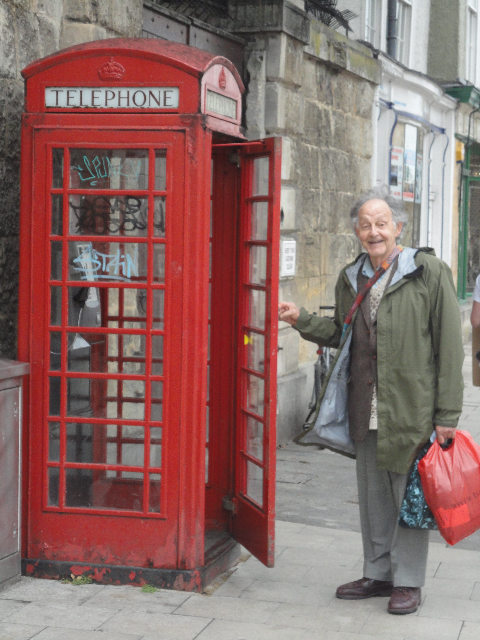 Exit in Tardis - Cambridge 2012
Exit in Tardis - Cambridge 2012
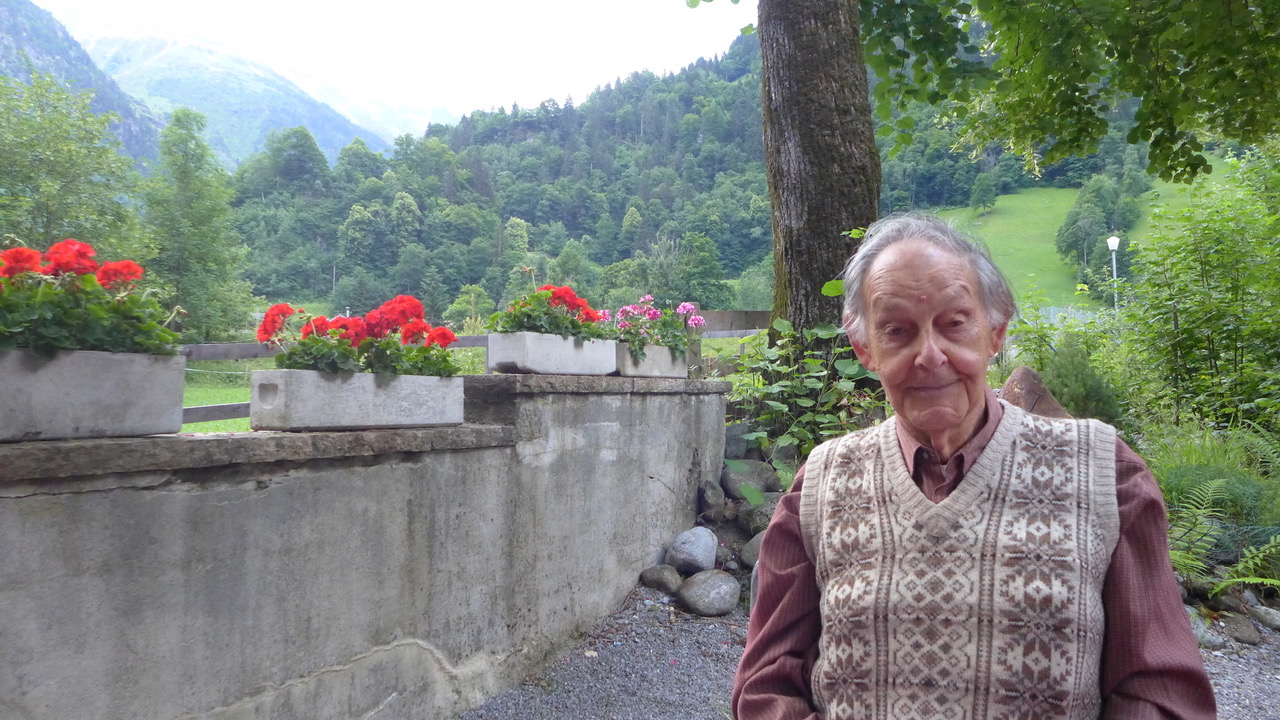 In Switzerland June 2018
In Switzerland June 2018
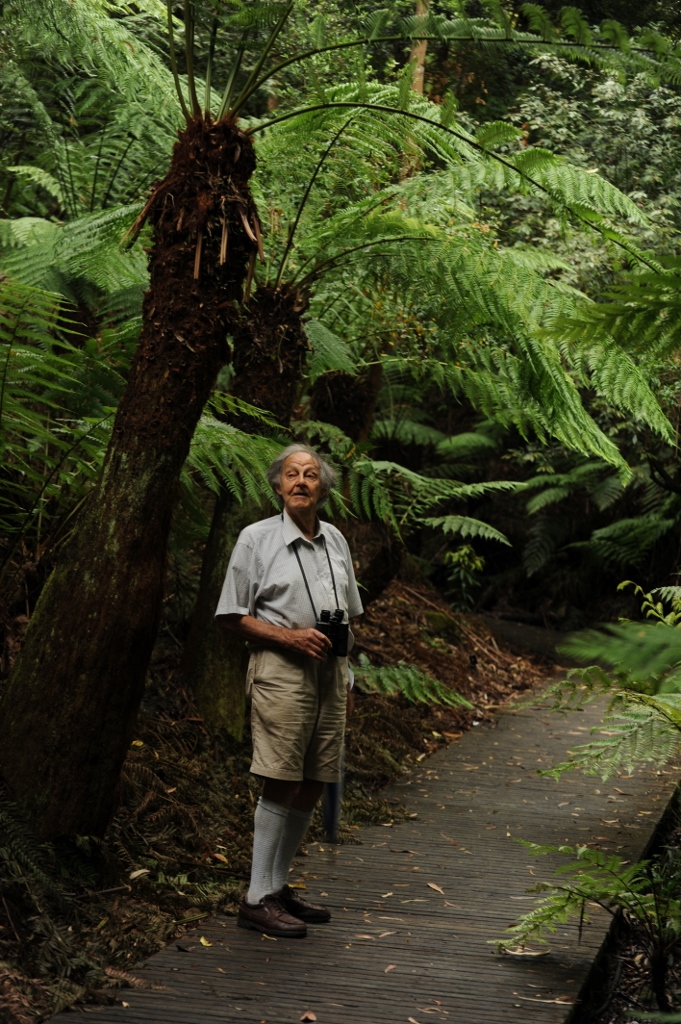 Bird-watching in rain forest 2011
Bird-watching in rain forest 2011
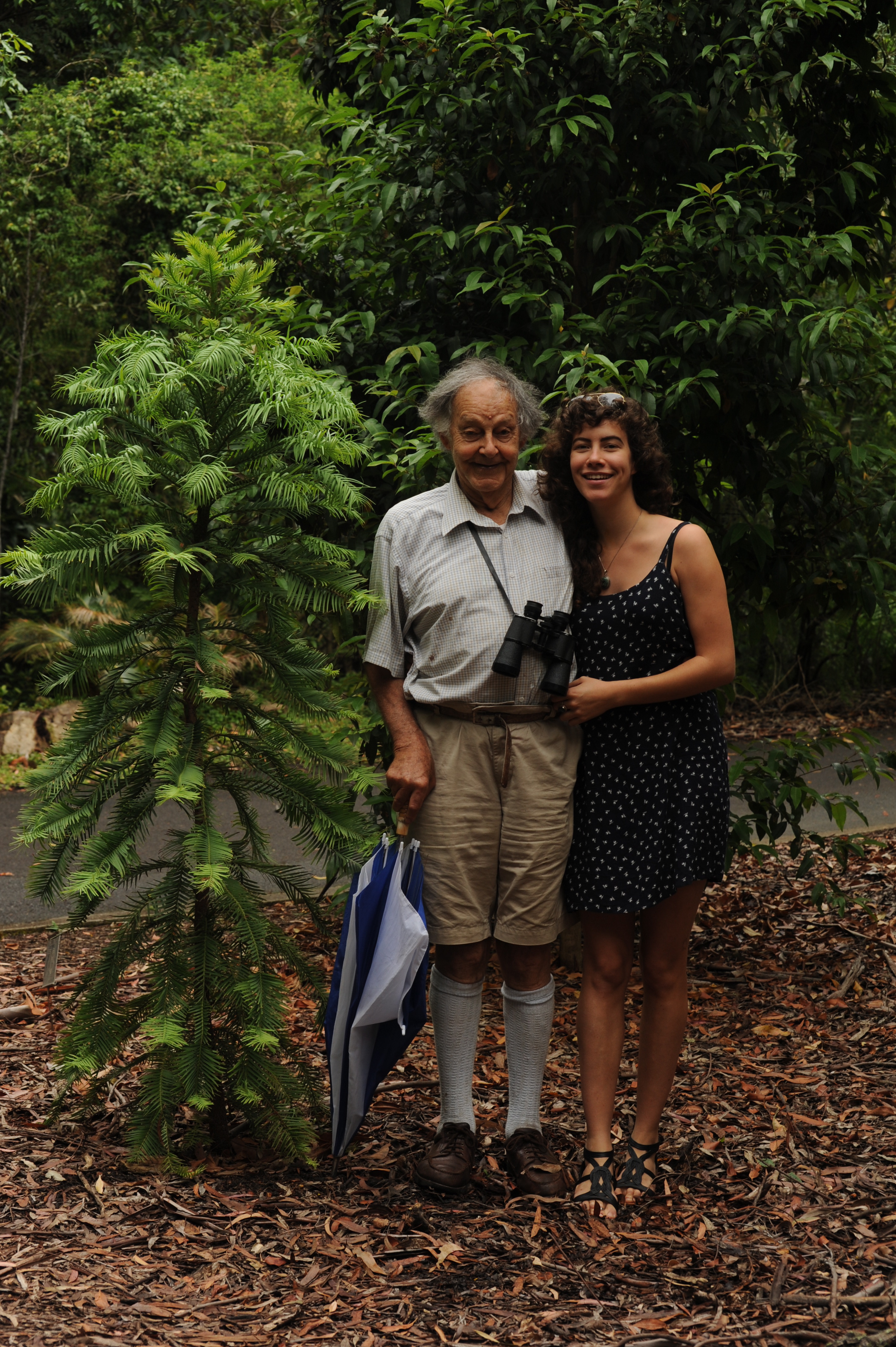 With daughter Meret and Wollemi pine 2011
With daughter Meret and Wollemi pine 2011
 With daughter Rebecca at Australian Academy of Science dinner 2013
With daughter Rebecca at Australian Academy of Science dinner 2013
 At granddaughter Finnian's wedding, 2009
At granddaughter Finnian's wedding, 2009
 Son Professor Mark Horridge and his mother Audrey, 2009
Son Professor Mark Horridge and his mother Audrey, 2009
 The main characters in the Bee Vision book
The main characters in the Bee Vision book
